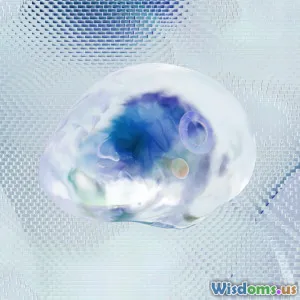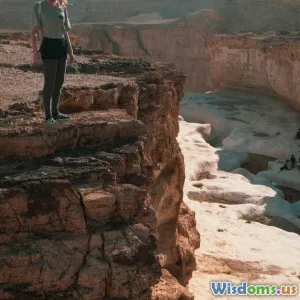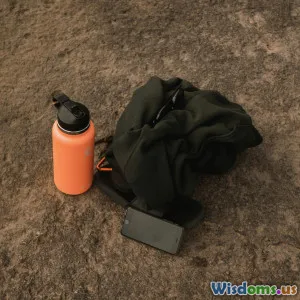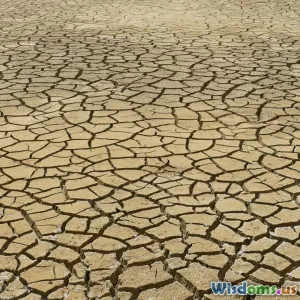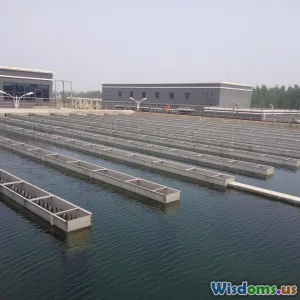
How to Purify Desert Water Using Natural Methods
8 min read Discover effective natural techniques to purify desert water for safe consumption in arid environments. (0 Reviews)How to Purify Desert Water Using Natural Methods
When lost in the vast, arid expanse of a desert, access to clean drinking water becomes not just a matter of convenience but survival. Natural water sources in deserts are rare, and what little water might be found often carries impurities, making it unsafe for human consumption. Yet, with ingenuity and natural purification methods passed down through generations and supported by modern understanding, one can transform desert water into a life-sustaining resource.
In this article, we'll explore systematic, proven natural methods to purify desert water—methods that harness the power of sunlight, sedimentation, and natural filtration to make water safe and potable.
Understanding the Challenge: Desert Water Contamination
Water found in desert environments, such as oases, underground pockets, or even collected surface runoff, often contains contaminants like:
- Microorganisms: Bacteria, protozoa, and viruses that can cause waterborne diseases.
- Sediments: Sand, silt, or clay particles suspended in the water.
- Chemical Contaminants: Salts and minerals often high in concentration.
These contaminants can lead to illness and dehydration if consumed without treatment. Thus, purification becomes critical.
1. Solar Distillation: Harnessing the Sun’s Power
Solar distillation is one of the oldest and most effective natural methods to purify water, especially in sunny desert conditions. It mimics the natural water cycle—evaporation and condensation—to separate clean water from impurities.
How It Works
Water is heated by the sun, evaporates, and leaves behind contaminants. The vapor condenses on a cool surface and collects into a clean container.
Constructing a Solar Still
- Dig a hole about 50-60 cm deep in the desert soil.
- Pour the contaminated water at the bottom.
- Place a container in the center to collect distilled water.
- Cover the hole with a clear plastic sheet, sealing the edges tightly with soil.
- Place a small stone in the plastic sheet’s center so that condensation drips into the container.
Real-World Insight
In survival training programs, solar stills have reliably recovered up to 500 ml of pure water in a day under full sun—a lifesaver in desert survival situations.
Advantages
- Removes bacteria, viruses, and heavy metals.
- Requires minimal materials, often found naturally.
Limitations
- Low yield per still; multiple stills may be necessary.
- Dependent on sunlight intensity.
2. Sedimentation: Letting Gravity Work
Sedimentation is the process by which heavier particles in water settle at the container’s bottom under gravity, clarifying the water.
Implementation
- Collect a container and fill it with cloudy desert water.
- Allow it to sit undisturbed for several hours.
Effectiveness
This natural process effectively reduces turbidity by up to 70%, making subsequent filtration or boiling more efficient.
Practical Application
Nomadic tribes historically utilized sedimentation to clarify water collected after desert rainfalls before proceeding with further purification steps.
Recommendation
Combine sedimentation with filtration or boiling to ensure microbial safety.
3. Natural Filtration: Using Earth Materials
Nature provides abundant filtration materials—sand, charcoal, and gravel—that can be used to build simple but effective filters.
Constructing a Natural Filter
- Layer coarse gravel at the bottom of a container.
- Add fine sand atop the gravel.
- Place a layer of activated charcoal (which can be made by burning wood in low oxygen) over the sand.
- Pour water slowly through the layered filter.
Removing Chemicals and Microbial Life
- Charcoal adsorbs impurities and certain chemicals.
- Sand and gravel trap sediments and pathogens.
Experimental Data
Studies have shown that a charcoal-sand filter can reduce bacterial count by up to 85%. However, full drinking water safety requires additional treatment.
4. Boiling and Cooling: Time-Tested Thermal Purification
Though primarily a human intervention, boiling is a natural process if you have access to firewood or solar cookers.
Process
- Bring desert water to a rolling boil for at least 1 minute (3 minutes at altitudes above 2000 meters).
- Allow it to cool, storing in a clean container.
Effectiveness
Boiling kills nearly all pathogens—viruses, bacteria, protozoa—and is internationally recognized by organizations such as WHO.
Sustainability in Desert Environments
Due to scarce fuel, combining sedimentation and filtration before boiling conserves resources.
5. Utilizing Desert Plants and Their Properties
Certain desert plants can assist in water purification or water collection.
Example: Moringa Seeds
- Moringa oleifera seeds contain natural coagulants that can clarify muddy water.
- Crush seeds and mix with water; the proteins cause suspended particles to coagulate and settle faster.
Real-World Use
In some arid regions, locals have used crushed Moringa seeds to improve water quality, especially pre-filtration.
Limitations
Moringa seeds do not kill pathogens and should be part of a multi-step purification process.
Conclusion: Integrating Methods for Safe Desert Water
Purifying desert water using natural methods requires understanding limitations and leveraging synergy among techniques. Solar distillation is excellent for removing all contaminants but produces limited quantities. Sedimentation and natural filtration effectively clarify water, making it safer for boiling and consumption.
In survival or remote desert living, combining techniques adapted from traditional knowledge and scientific advances can save lives. Whether through solar stills harnessing relentless desert sun, earth’s natural filtration systems, or the coagulating power of plant seeds, the quest to turn desert water into drinkable water is achievable with patience and resourcefulness.
Actionable advice: When you venture or live in desert regions, carry lightweight materials to build solar stills (clear plastic sheets), learn about nearby useful plants, and always pre-filter water to maximize purification efficiency. Remember, every drop purified naturally accounts for both survival and sustainable interaction with the harsh desert environment.
References:
- "Solar Water Distillation," U.S. Geological Survey (2020).
- WHO Water Sanitation Guidelines (2017).
- "Natural Filtration of Drinking Water," Journal of Environmental Science and Engineering (2018).
- F. Ahmed, "Moringa Oleifera and Water Purification," African Journal of Biotechnology (2019).
Author Note: Ensuring access to potable water in deserts not only depends on technology but also on understanding and respecting the environment’s natural processes.
Rate the Post
User Reviews
Popular Posts
